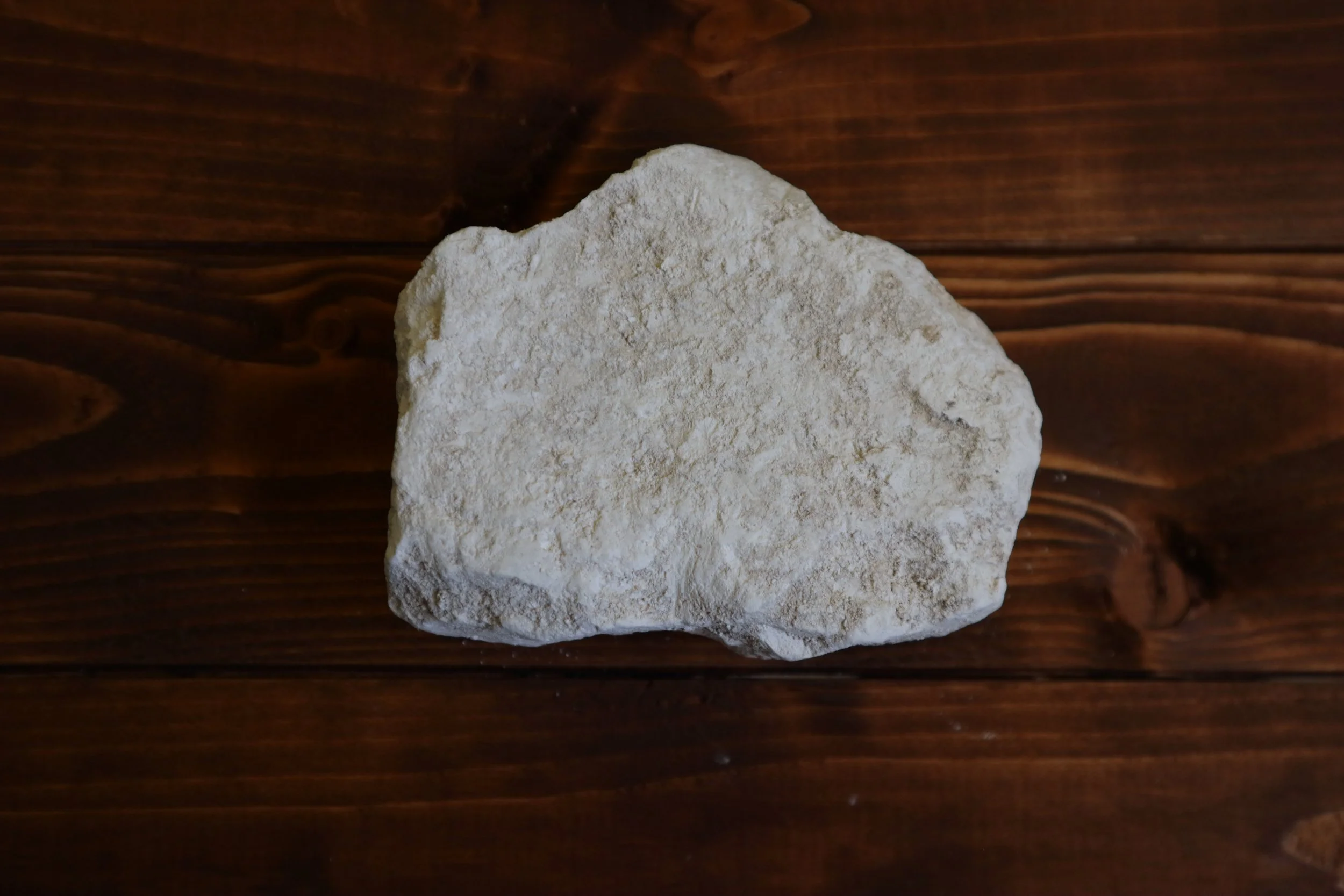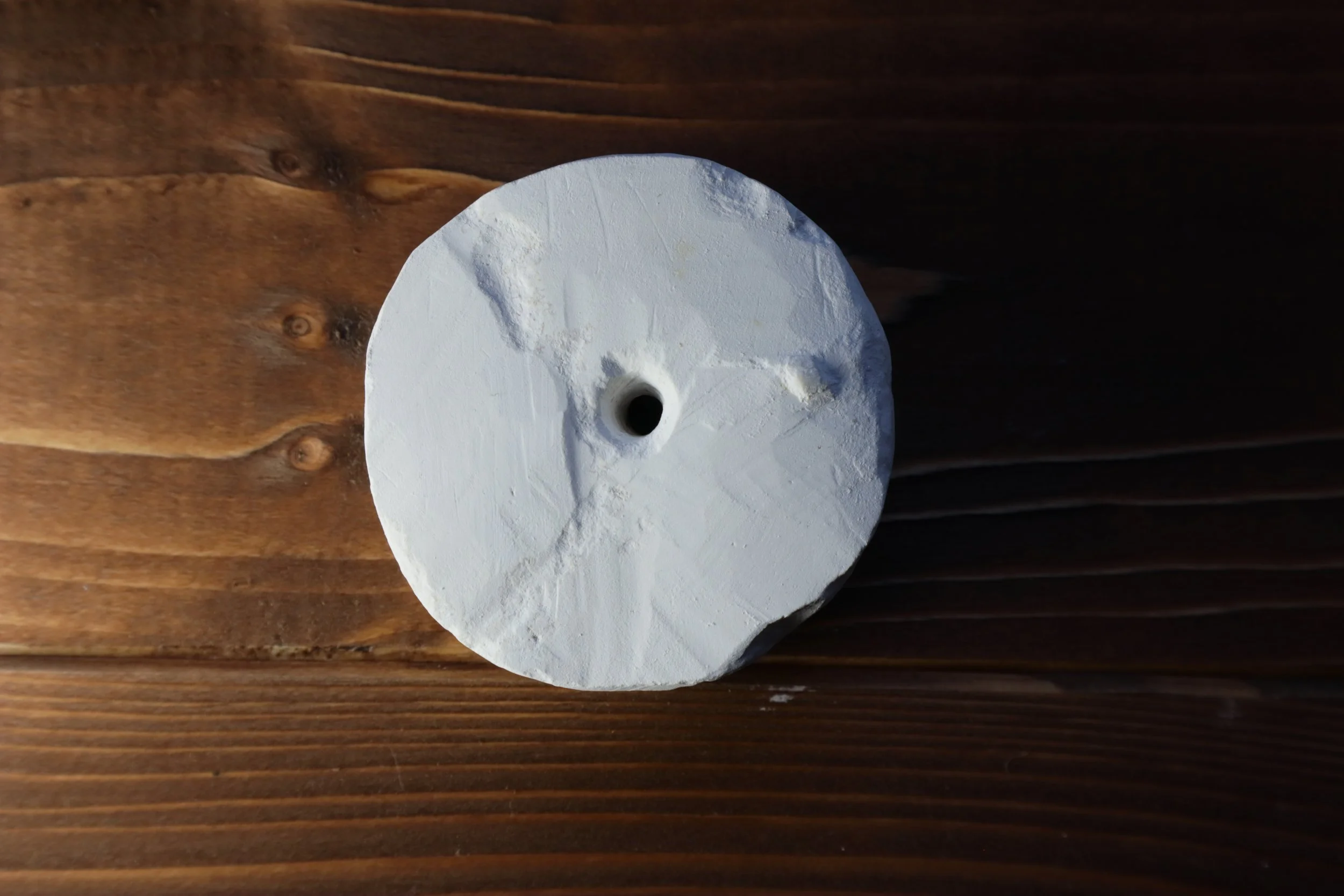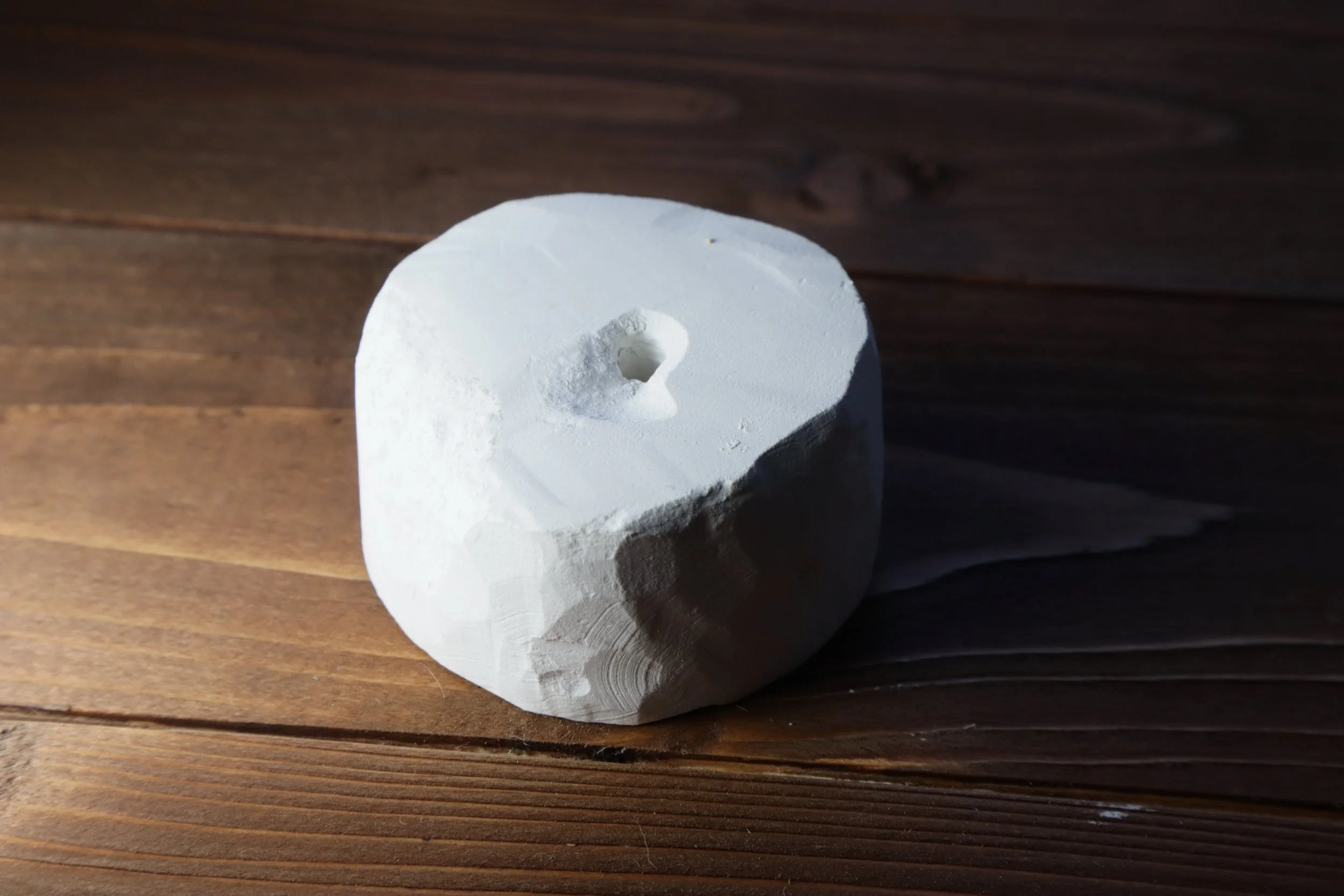I won an award!
Unworked chalk block from Wiltshire, UK
I am so excited to finally being doing some experiments again! I won a small research grant from EXARC to conduct an experiment that would be useful for textile scholars who study pre-industrial (not just prehistoric) textile production and tools (see #chalkwhorlspindling on socials). My primary goal was to determine the range of yarns that could be made using the whorl assemblage at Danebury hillfort, the Iron Age site which formed my principal study area. Many of the whorls were quite heavy, prompting some of my colleagues to question whether they were used for making yarns in the first instance! My experiments will help address this question, and hopefully give real world context to their utility which will enhance the discussions I’ve already raised about them in my doctoral thesis.
Being on the heavier end of the whorl spectrum, knowledge of the yarn grist that could be produced with them will also contribute to my loomweight experiments, which you can see online via YouTube and through open access. So far, I have assumed that the yarns I used for my loomweight experiments could have been spun from the whorl assemblage—now I will be able to test whether the production at Danebury hillfort could have been self-sufficient (although I suspect that the communities in the surrounding areas supported each other, which is more than likely the case). Eventually, it would be good to setup an experiment where all the yarns used in my loomweight experiments are made using handspun derived from replica whorls.
This research will also contribute the growing body of experimentally derived data about prehistoric textile production. As it stands, most academic research encompasses whorls ranging from 4g to 52g, but nothing which compares to the largest of the Danebury whorls, at 230g (you can read all about this in my PhD thesis). Since the upper end of handspindling has not been sufficiently explored, the data produced from this experiment project will provide valuable insights. I’m curious to see how things turn out.
As a crafter, these research goals seem a bit strange. It seems obvious that I’d be able figure out a way to spin with heavy whorls and produce a vast array of grists of yarn. I would probably manage to do it subconsciously. However, due to the nature of experimental archaeology needing to be precise with its research goals and recording practices, I need to break down my knowledge in a testable fashion. If you’d like to hear more about the differences between experimentation and experimental archaeology, and why the latter takes so much longer, see this video I did a few years ago.
In a future update on this experiment, I’ll talk a little more about my insights from carving a whorl from chalk. It’s a material rarely used by most other cultures in the world and it’s a separate challenge in this experiment. I have some great footage to share, and I will soon, so stay tuned!
Chalk clay whorl, following the archaeological assemblage from Danebury hillfort (Hampshire, UK)
If you’d like to get real time updates when I’ve completed the each stage of my hand spinning experiments, be sure to check out my Patreon. I’ve already posted my #2 update and will be making my third update in the next week or so. Eventually, I will be posting videos and my pre-publication draft! Everything will be open access eventually, but if you can’t wait, and you’d like to support cutting edge research, I’d love it if you could support me with a monthly contribution. Thanks for reading! <3
Oblique angle of hand carved chalk whorl, informed via the archaeological assemblage at Danebury hillfort.


